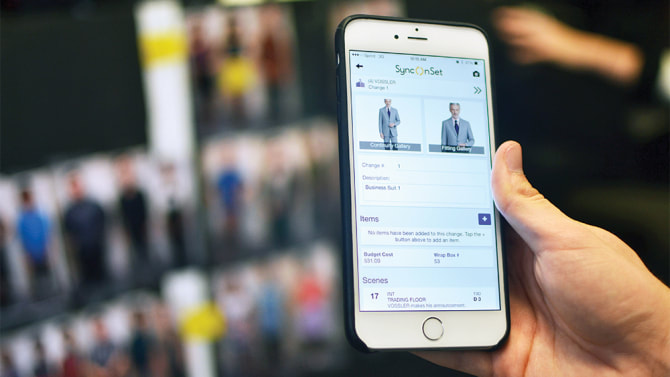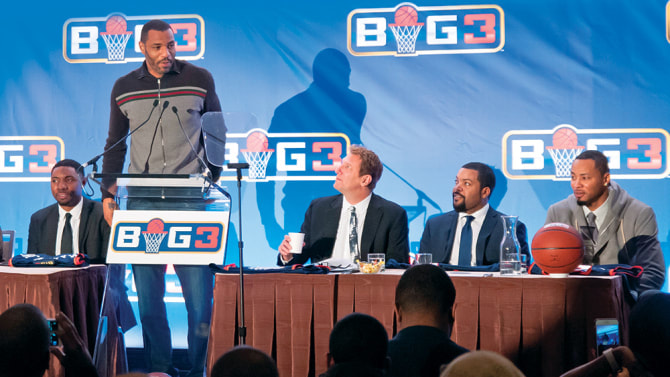I N D U S T R Y T R E N D S
|
While Hollywood Squabbles, YouTube Has #NoFilter on Diversity
In the film and TV world, diversity is dictated from the top down by executives who greenlight the projects and the writers and the producers they hire to craft the stories. This means we are left with content that largely reflects the inhabitants of show business executive suites, which tend to be white males. These execs also tend to be lawyers, MBAs and/or sociopaths, but that’s another topic.
In the social video space, individual users greenlight their own no-budget projects, and they’re surfaced organically, without corporate sponsorship or promotion, by the fans. By the time the show business machinery gets its claws on the creators, they are already stars with fully-developed personas and massive followings. The differences don’t end there. Check out my article in the VideoInk to get the full picture. One of the YouTube creators affecting this organic flowering of diversity in the social video space is Lilly Singh, whom I profiled as VideoInk's "Creator of the Year" for 2015.
Drone Dangers Have Hollywood Worried
Matt Ragan loves telling directors how his drone can follow a car down the street at eye level in a tight shot, like a dolly without rails, then rise into the air like a crane, and soar into the sky like a helicopter.
“That seamless transition is something they really eat up,” says Ragan, an entrepreneur who launched Birds Eye of Big Sky, a company that provided drones to scout for “The Revenant,” among other films. But as versatile as drones are, they have drawbacks. Small remote-controlled aircraft can be hard to handle and are sometimes flown carelessly — as exemplified by a drone’s close call with a Lufthansa jet near LAX in March. Want to Track Costumes & Continuity on Your Smartphone? There's an App for That
It’s hard enough for viewers to sort out the hundreds of characters on HBO’s “Game of Thrones.” Imagine what it’s like for the show’s costume supervisor, Sheena Wichary, who has to keep track of every stitch of clothing (including multiples of the same outfit) and their state of wear at any point in the narrative, across separate units shooting in geographically diverse locales such as Northern Ireland, Iceland, Spain, Morocco, and Croatia.
Wichary used to do things the old-fashioned way: poring over scripts with a ruler and a highlighter. But three seasons ago, she went high-tech with a cloud-based application for the web and smart devices that uses a software algorithm to automate the script-breakdown process. The program, called SyncOnSet, sorts out characters with “all the costume changes and our budget from episodes one to 10,” says Wichary. “This would ordinarily be a two-man job involving weeks of work.” Celebs Supercharge Their Incomes by Endorsing Consumer Products

With film and TV salaries and studio deals declining and music sales in a free fall, the entertainment industry is increasingly turning to brand deals to keep the Cristal flowing into retirement. Read about it in my article for Variety.
How Disney XD Scored with Gamer’s Guide Live Snapchat Promotion
Yes, studios are now promoting moves and TV shows with live Snapchats by digital influencers. Some of your are probably asking, "What's a digital influencer?" It could be a YouTube star or, as in this case, some teenagers from the Midwest who have a million or so followers on Vine. Find out more in this article I wrote for VideoInk.
Video is No Longer New York Times' 'Helper Medium'

Sometimes a bigger video player is just a bigger video player. But when the New York Times more than quadrupled the size of its video player on its home page, it not only dramatically expanded the stage to display its visual wares, it also revealed a dramatic shift in the way the Gray Lady thinks about the medium.
Ad revenue for editorial video has grown nearly 70% over the past year, and visitors to the Times web site are twice as likely to look at video as they were back in January. “It’s not just that video is more prominent. I think it’s thought of as a full partner in the news in a way that hasn’t really happened before,” says Bruce Headlam, the New York Times’managing editor of video. Read the full article here. Smartphone Photography Makes Life Hard for Unit Publicists
Cast and crew can now take pictures on set and immediately leak the images on social media, spoiling the studios' PR campaigns...
Even on big event films where everyone is required to sign nondisclosure agreements, people often forget that sharing info about the production on social media can get them fired. “They’ll say, ‘Gee, I didn’t realize I couldn’t send out that photo of that endoskeleton,’ ” says [unit publicist Sheryl] Main, who recently worked on “Terminator Genisys.” “Really? You signed something.” Read about what unit publicists to stop social media leaks in my article in Variety. |
Showbiz Heavyweights Take Shots at the Big Leagues, But Not All Score
Sitting courtside, cheering your team on, rubbing shoulders with elite athletes and, hopefully, one day lifting that championship trophy high as the team bathes you in a champagne shower — it’s the kind of thrill you can’t get reciting lines in front of a green screen.
So it’s no surprise to find that an increasing number of celebrities are investing in major league teams, including the NBA’s Memphis Grizzlies (Justin Timberlake), Philadelphia 76ers (Will & Jada Pinkett Smith) and the NFL’s Miami Dolphins (Jennifer Lopez, Gloria & Emilio Estefan, Serena & Venus Williams and Fergie). Rapper-actor Ice Cube has taken it a step further, teaming with manager Jeff Kwatinetz to launch their own three-on-three basketball league, Big3, featuring former NBA stars including Allen Iverson. But veteran Hollywood producer Peter Guber has a word of caution for anyone considering an investment in a sports franchise ... Because It's Facebook, Stupid: Why Facebook Live is Important or 1.59B Users Can't Be Wrong
At Facebook Live’s big features roll-out in Hollywood, a video screen played Tastemade’s 55-minute live stream of a pair of a hands drawing faces on the creamy surface of a cup of coffee latte with a toothpick, while members of the media roamed the room with their smart phones, eagerly live streaming to what were likely non-existent audiences.
The message of the day was “this is the next big thing, you have to try it,” but it felt as an unhip as Mom’s awkward post about sexting on your timeline … How Social Media Can Point to Potential Oscar Nominees and Winners
In the old days, Oscar watchers would look to Las Vegas to get a quick breakdown of which nominees were mostly likely to take home a statuette on awards night. Today, they can gauge the potential winners, as well as gain actionable insights on how to better market their films, via a process known as “social listening,” an automated analysis of mentions on platforms such as Twitter, Instagram and YouTube.
Check out the full article in Variety. How Talent Agencies Are Changing the Streaming Biz
WME agent Chris Jacquemin remembers what it was like when he first started repping digital native talent back in the old days of the streaming video industry – you know, the early 2010s.
YouTubers had been making their own deals, and "they were a bit shocking," says Jacquemin, whose clients include top digital influencers such as Grace Helbig, The Fine Bros., Felicia Day, Lilly Singh and Cameron Dallas. The multi-channel networks were typically taking 50% of their AdSense revenue (after Google had already taken its 45% cut) and 80% on brand deals. They were also demanding aggressive splits on ownership of the content and control of distribution rights, as well as requiring talent to promote products or services in which the MCNs had a vested interest. "It occurred to us that it really wasn't being managed like a marketplace, meaning nobody was shopping the talent to Maker (Studios), Fullscreen, Machinima and Defy at the same time," says Jacquemin. "They had a friend or an in at this place or that place, and they did the deal there. We came in and said, 'No, we think this talent is valued well above what you're paying and we will prove it.' It was nothing innovative. We agented." Read the rest of my article in StreamDaily, in which digital talent reps from WME, CAA and Collab and manager-turned-producer Larry Shapiro explain the tricks of their trade. Incubating Audiences Online to Attract Traditional Media Dollars
 Vine stars Cameron Dallas and Nash Grier. Vine stars Cameron Dallas and Nash Grier.
As the online video universe has exploded in recent years, it has become clear that it’s not a sound destination for a get-rich-quick scheme. Whether the outlet is a YouTube channel (where the typical ad revenue split is about 45%/55%, favoring the content creator) or a standalone web page, the key to making it a viable business is by constantly churning out new videos.
Click here to read the article in StreamDaily. How to Sing for Your Supper on YouTube

Oregon-based a cappella singer Peter Hollens tells me how he's built his music career on YouTube without using of record labels and other 20th Century industry channels in this article for StreamDaily.

It’s a universal scenario that’s at least as old as “Leave It to Beaver”: A child asks mom and dad if he or she can do the cutting-edge thing that the kid up block is doing, and the parents reply, “If the kid up the block jumped off a bridge, would you jump off a bridge, too?” That used to be the attitude of state legislatures when people pleaded with them to establish tax credits or rebates to encourage film and TV production. Federal crop subsidies might be OK, but production incentives were looked upon as handouts, corporate welfare, or worse, creeping socialism. Just because Canada was doing it, it didn’t mean we were going to do it, too.
But times have changed. It’s like coming home from college to find mom has pierced her navel, and both dad and your high school science teacher have gotten tribal tattoos. Click here to find out more than you ever wanted to know about the film & TV production incentive race that's drastically altering the show business landscape. 
How is model-actress Bar Rafaeli's faux pitch for a Kickstarter campaign to fund her sex tape on "Funny or Die" connected to growing Hollywood trends at the nexus of technology and entertainment? Find out
in my lead story in Variety's Hollywood's New Leaders issue. |








